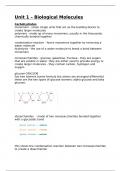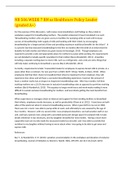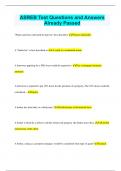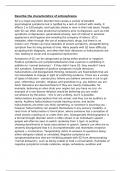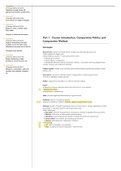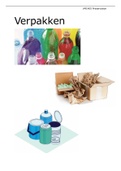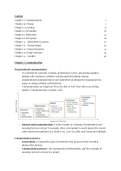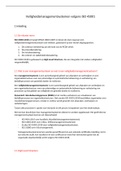Lecture notes
Biology A level AQA - Unit 1 - Biological Molecules
- Institution
- AQA
Revision notes for all of unit 1 a level biology (AQA) - Biological Molecules, including: Carbohydrates, proteins, enzymes, lipids, biochemical tests, DNA and RNA, DNA replication, and ATP and inorganic molecules. I’ve made and added to these notes over the two years of college and have finished ...
[Show more]
